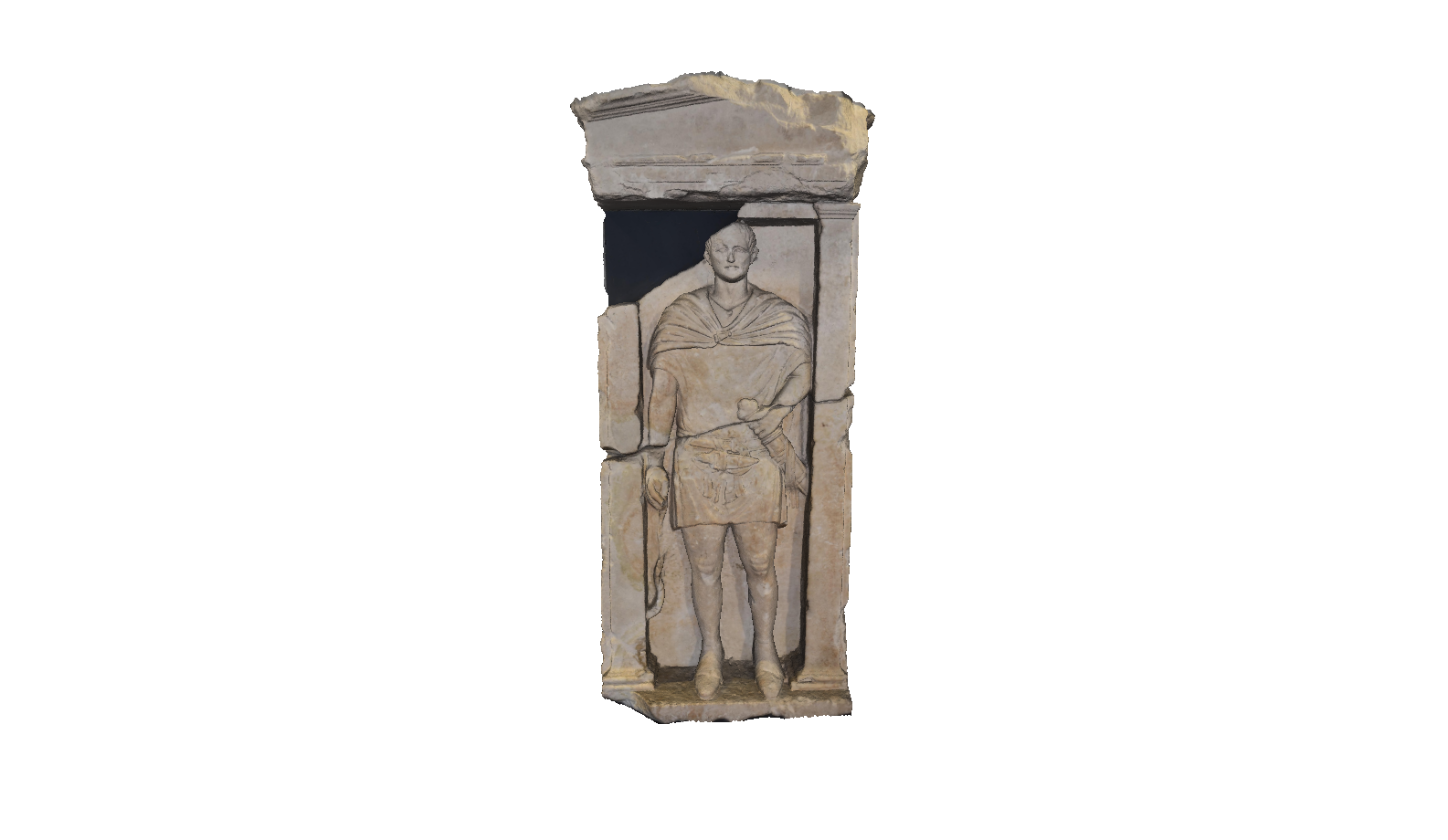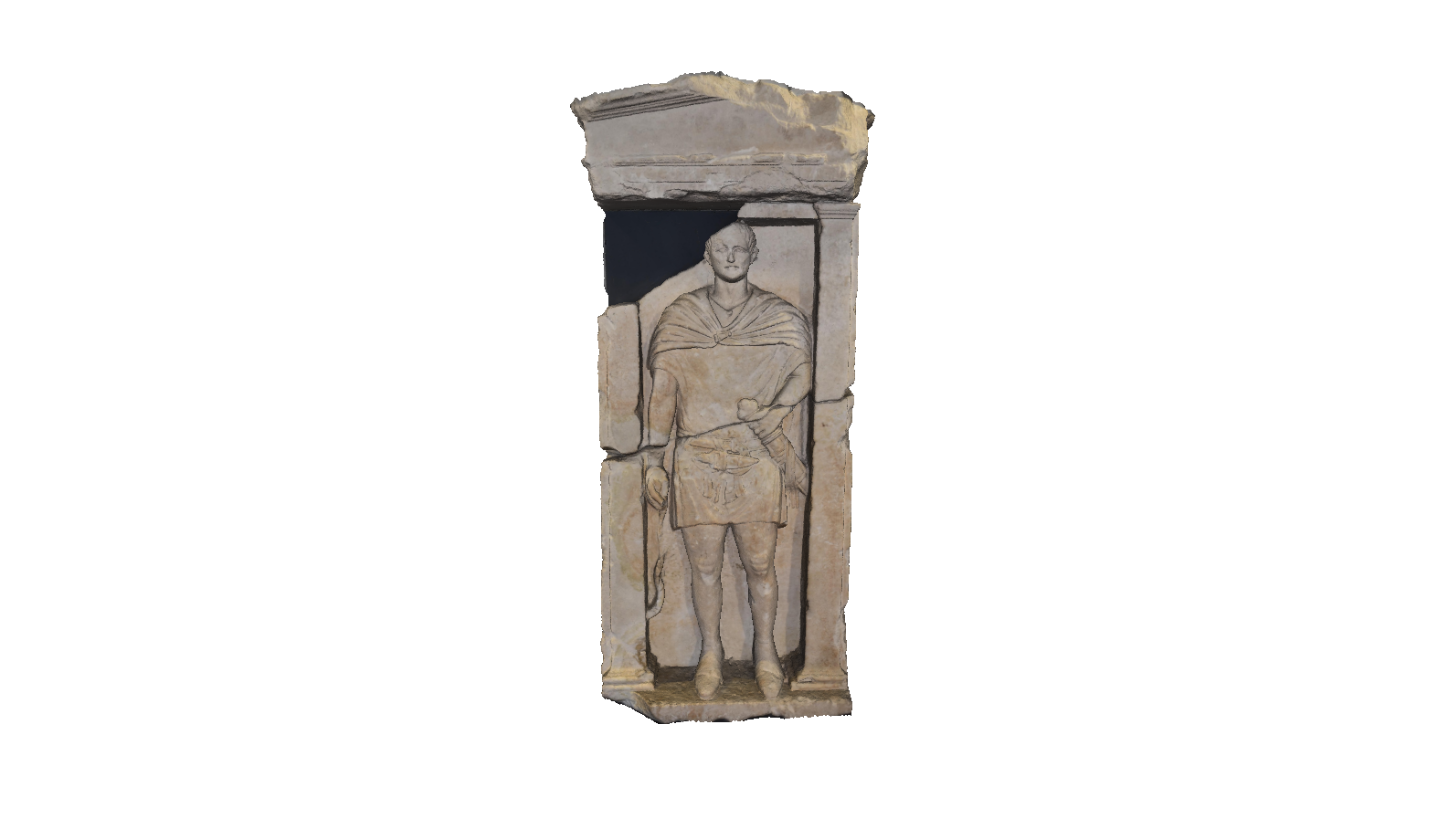Description
Click on the image to go full screen
This stele, made of Nanto stone, limestone from the Berici Hills, was found in Via Ognissanti in 1963 thanks to excavations by the Soprintendenza Archeologica and given to the Museum in 1985 on the occasion of its new location in the Eremitani complex.
The monument is a pseudoedicule type: it has two lateral pillars supporting a false pediment, which creates a niche where a larger-than-life man is depicted in military garb, wearing a short tunic, a cloak over his shoulders (sagum) held on his chest by a fibula and a belt (cingulum) for holding a dagger (pugio). In his left hand, on which the typical centurion ring is recognisable, he holds a short sword (gladius), while in his right he holds a vine stick (bacillum viteum), an insignia of military power as it refers to a whip with which to impart corporal punishment. On his feet he wears thick-soled sandals with overshoes.
The heavily damaged inscription attributes this stele to Minucius Lorarius, centurion of the legion Martia. This is confirmed by another element: two holes on either side of the head originally served to fix a metal crown to imitate the laurel wreath that a centurion of this legio was privileged to wear at public ceremonies.
Due to the style of the figure, which is strongly flattened, the monument dates to the early Augustan age and is part of the provincial, especially Venetian, art of funerary stelae.

